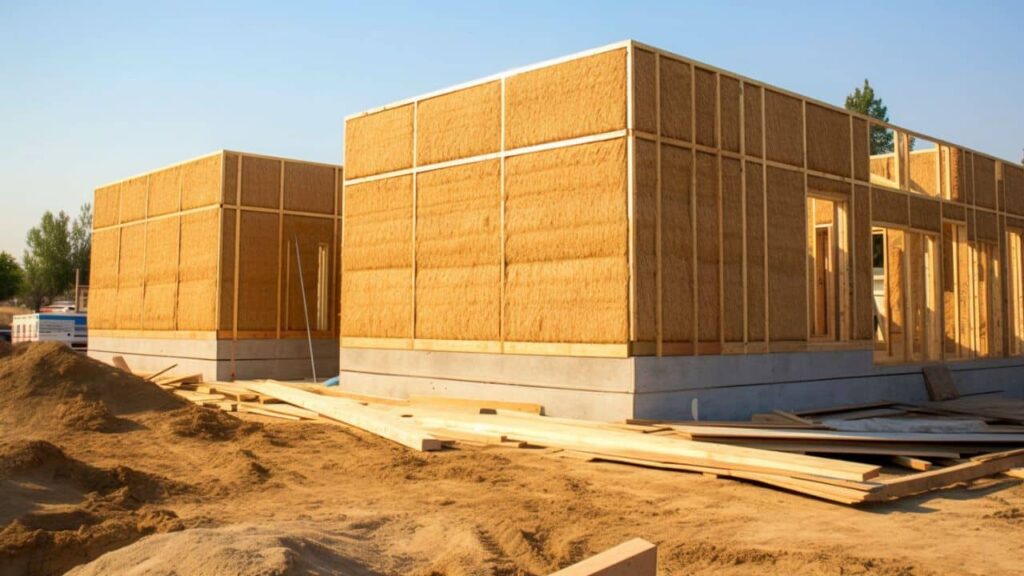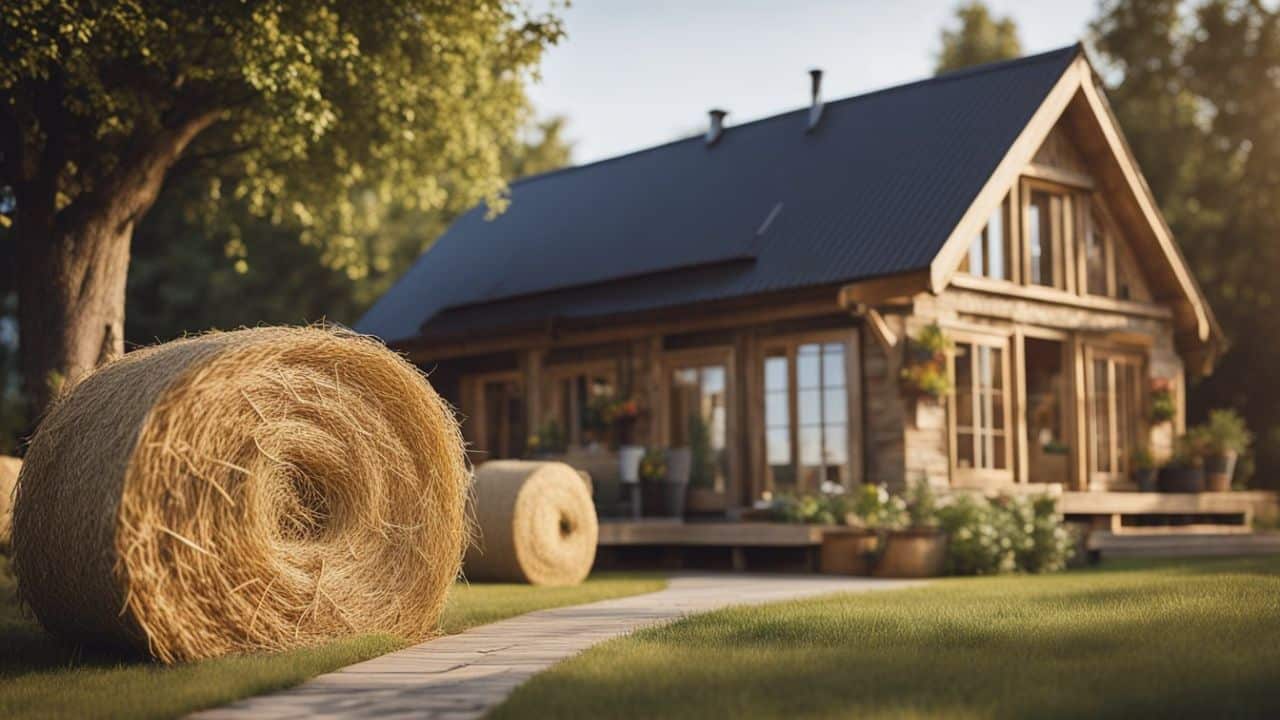Straw bale houses are gaining popularity due to their ecological and sustainable nature. These unique homes are built using straw as either the primary structural element or insulation or both, providing a natural and renewable way of building.
 Straw bale homes offer exceptional insulation properties that help you keep your house warm during colder months and cool during hot seasons, reducing heating and cooling expenses. A study by the University of Bath found that living in a straw house can lower your energy costs by as much as 85%.
Straw bale homes offer exceptional insulation properties that help you keep your house warm during colder months and cool during hot seasons, reducing heating and cooling expenses. A study by the University of Bath found that living in a straw house can lower your energy costs by as much as 85%.
Contrary to what many people think, straw bale houses are known for their low fire hazard potential. Due to the density of the packed straw and the plaster finish, these homes present a lower fire risk compared to traditional construction materials.
 This natural material has low embodied energy, which means it requires less energy to produce, transport, and convert into construction materials. Furthermore, the high insulation factor translates to lower reliance on non-renewable energy sources for heating and cooling purposes, ultimately reducing the overall environmental impact of your home.
This natural material has low embodied energy, which means it requires less energy to produce, transport, and convert into construction materials. Furthermore, the high insulation factor translates to lower reliance on non-renewable energy sources for heating and cooling purposes, ultimately reducing the overall environmental impact of your home.
The cost of building with straw bales is often comparable to that of a stick-built home, making it an economical alternative for potential homeowners.
 Straw bale houses have excellent sound insulation properties. When you live in a straw bale house, you’ll notice that interior sounds appear clearer and more distinct. This is because the thick straw bale walls effectively block out background noise from outside, creating a peaceful and calm atmosphere inside the home.
Straw bale houses have excellent sound insulation properties. When you live in a straw bale house, you’ll notice that interior sounds appear clearer and more distinct. This is because the thick straw bale walls effectively block out background noise from outside, creating a peaceful and calm atmosphere inside the home.
Straw bale houses possess a unique aesthetic appeal that attracts many homeowners. Many people love the modern, yet traditional look of straw bale architecture. The natural materials and textures of straw bale houses can effortlessly blend with various architectural styles, creating cozy and charming spaces. You can shape and mold straw bale walls into various forms, allowing for artistic expression and inventive architecture.
 Straw bales, usually made from the leftover stalks of wheat, are a renewable natural resource that can be sourced from nearby agricultural areas. Using local materials reduces the need for importing materials like wood or bamboo, significantly cutting down on transportation costs and emissions.
Straw bales, usually made from the leftover stalks of wheat, are a renewable natural resource that can be sourced from nearby agricultural areas. Using local materials reduces the need for importing materials like wood or bamboo, significantly cutting down on transportation costs and emissions.
In addition to straw bales, other natural materials commonly used in straw bale construction include earthen plaster and reclaimed wood for support beams, further reducing the project’s environmental impact. Nebraska-style straw bale construction, for instance, stacks bales on top of each other to support the roof, eliminating the need for large structural wood beams. Earth or clay plasters can be used for the finishing of walls, which provide an organic and breathable surface that maintains a healthy indoor atmosphere. By using natural materials like straw, you are reducing the exposure to harmful chemicals often found in man-made products.
 Straw bale houses are known for their resilience to extreme weather conditions. They can withstand high winds, earthquakes, and intense weather, which is crucial in areas prone to storms and extreme temperature fluctuations. The densely packed straw absorbs and distributes the force of the wind, while the sturdy construction ensures the building stays in place. The flexible nature of the straw material allows the house to move with seismic activity without collapsing.
Straw bale houses are known for their resilience to extreme weather conditions. They can withstand high winds, earthquakes, and intense weather, which is crucial in areas prone to storms and extreme temperature fluctuations. The densely packed straw absorbs and distributes the force of the wind, while the sturdy construction ensures the building stays in place. The flexible nature of the straw material allows the house to move with seismic activity without collapsing.
In recent years, straw bale houses have gained regulatory acceptance, making it easier for builders and homeowners to obtain necessary permits for construction. The International Residential Code (IRC) now contains specific guidelines for designing and constructing straw bale homes, which helps ease the permitting process. Additionally, the IRC guidelines ensure that your straw bale home meets minimum safety and structural standards, providing peace of mind to both you and the regulatory authorities.
As straw bale houses continue to gain popularity and regulatory acceptance, you can take advantage of this eco-friendly and efficient building method with confidence.
You can read the original article at greenbuildingelements.com


I bet buildings made of or insulated with straw are great for colder climates as straw immures heat well.
Can a straw-bale building have more than one storey?
Yes, it can if properly engineered.
If the bales are load-bearing, they probably can’t be stacked to more than one story. If you want a strawbale house to be two or more storeys, the only realistic option would be to build a frame and fill that with the straw.